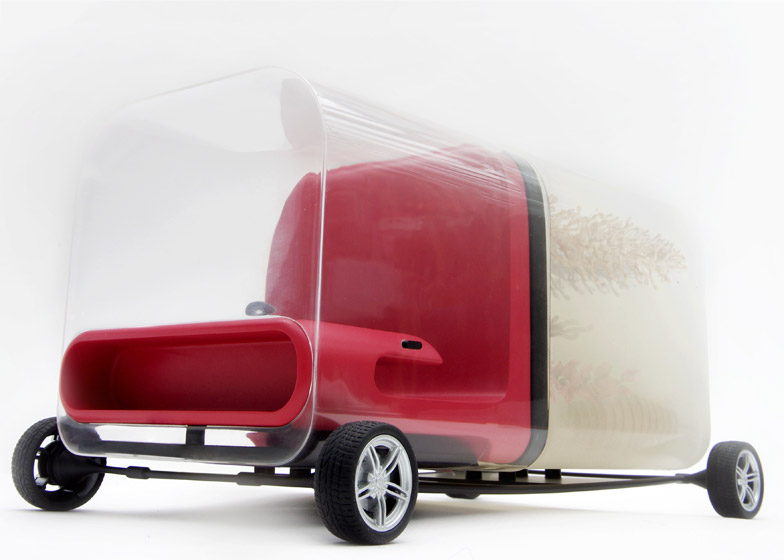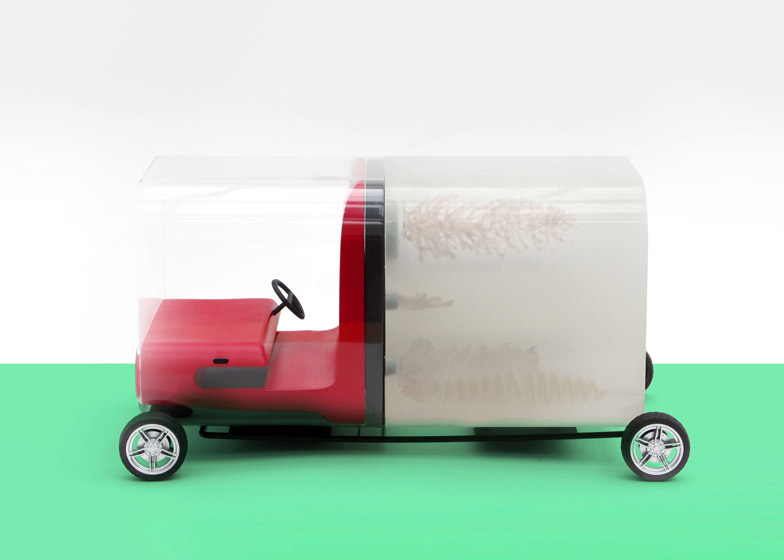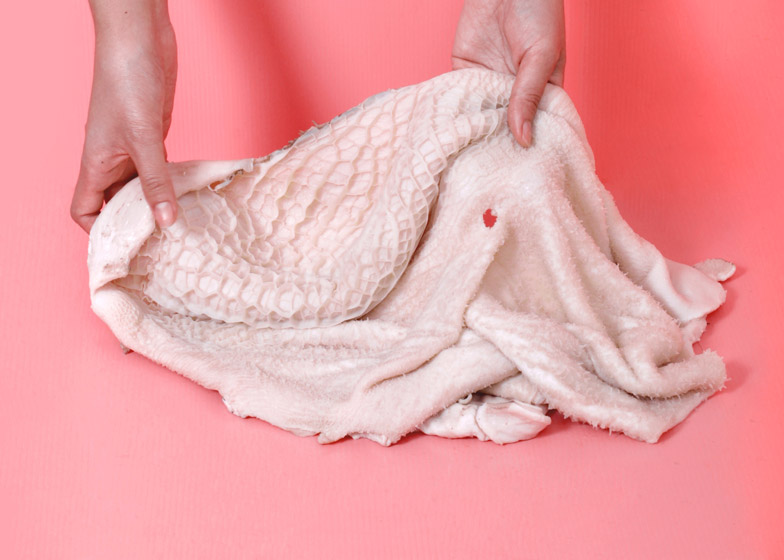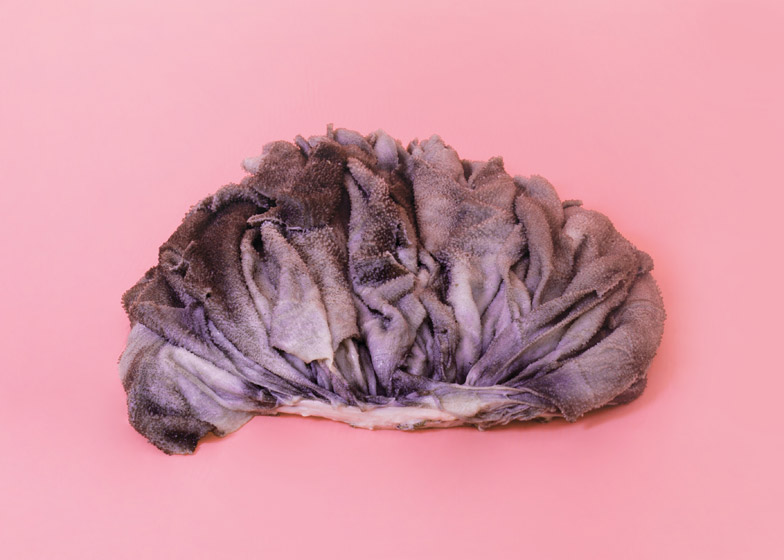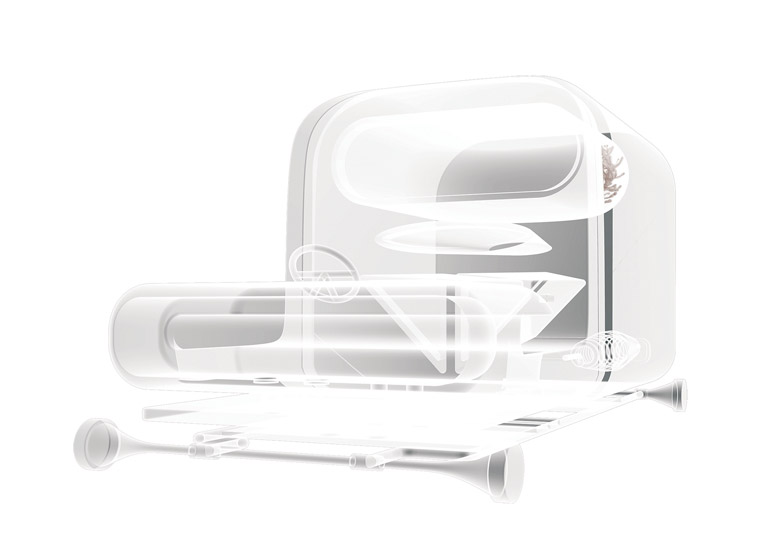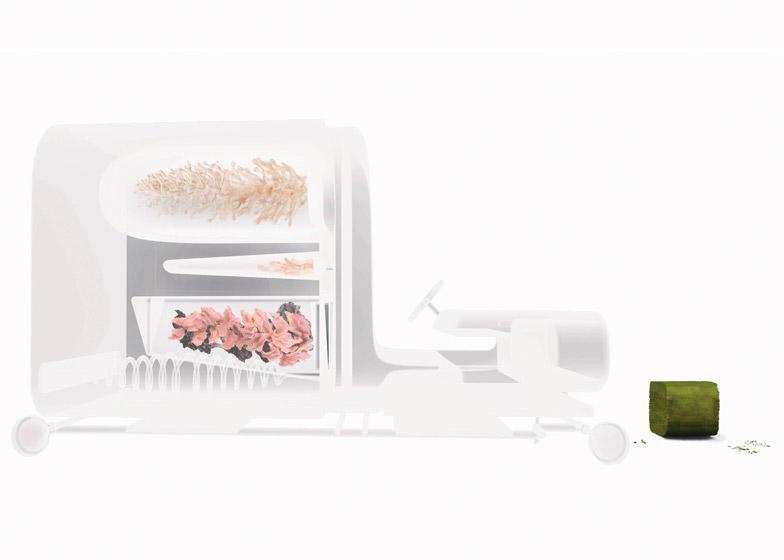London Design Festival 2015: Royal College of Art graduate Yi-Wen Tseng has imagined a car powered by bio-printed organs, using synthetic biology to turn a cow's digestive process into a fuel system.
When designing the Digestive Car, Tseng considered ways to harness cows' well-known tendency to expel large amounts of methane gas.
By pairing the cow's digestive process with 3D bio-printing – a process proposed for use in organ transplants – the designer identified a way to transform this into an opportunity to create an alternative fuel system.
The transparent rear half of the car houses four synthetic stomachs – modelled on the quartet found in a cow – and each of the organs facilitates a different process, including filtration, methane production, and digestion.
"There are four different contained hybrid stomachs used to fuel the vehicle," Tseng said. "In order to monitor the health condition while driving, the stomach bags are turned inside-out."
The driver "feeds" the car grass, which is digested to produce methane and used to power the vehicle. The resulting excrement from the process is expelled like exhaust fumes and can be used as fertiliser for future grass growing.
"The shape and structure are designed to strengthen each bio-function and also replace the function of muscles," said the designer. "When the driver uses the stomachs to fuel the vehicle, it returns a bio-waste."
"By collecting the energy from nature it is then contributed back into the environment," she added. "This bio-vehicle process represents the circulation of ecological systems. Rather than designing a practical functional product, this is a radical critical product design."
RCA graduate Julian Melchiorri also experimented with synthetic biology, developing an artificial leaf that could absorb water and carbon dioxide to provide oxygen, and potentially aid in long-distance space travel.
Meanwhile designer and researcher Neri Oxman used 3D printing to produce "wearable skins" with hollow channels that could host microorganisms.
"The Digestive Car explores a new aesthetic of bio-products, to open discussion about the issues surrounding global warming," Tseng commented. "These speculative, self-sufficient fuel sources will provide a new energy future and a cleaner environment."
Tseng came up with the concept while studying on the RCA's Design Interactions course, which was formerly run by designer Anthony Dunne. Other projects from recent DI graduates include proposals to install tiny turbines in the arteries of genetically modified cows and a new immunisation technique that involves inhaling vaccines through fungus.
The Digestive Car was among projects shown at the Royal College of Art's Sustain exhibition, which opened to coincide with the London Design Festival 2015 and continues until 2 October 2015.

